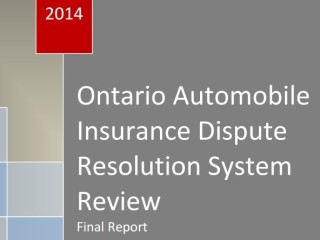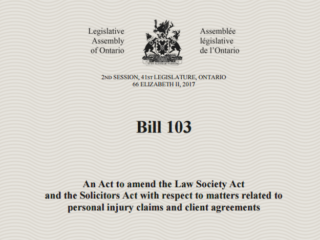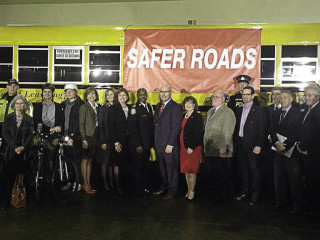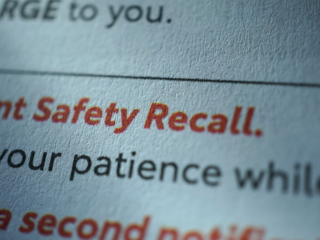This occupiers’ liability case highlights the importance of meeting the 10-day statutory notice requirements in proceedings against the Crown, as well as the hurdles in establishing liability under the Occupiers’ Liability Act (OLA). It is not enough to simply rely on internally generated occurrence reports to fulfill the notice requirement: the notice must fulfill the requirements set out in Latta v. Ontario.
Barry v. His Majesty the King in Right of Ontario, 2023 ONSC 4299 was a judge-alone trial on liability. The plaintiff injured her leg after falling from a retaining wall at a provincial park campground playing fetch with her dog, landing in the water below. She claimed that she had tripped over the retaining wall because it was concealed by grass.
The Court dismissed the action with costs to the Crown, finding that the plaintiff had failed to provide notice to the Crown within 10 days as required by s.7(3) of the Proceedings Against the Crown Act. Furthermore, the plaintiff had not proven she tripped on the retaining wall or that the Crown acted unreasonably, contrary to s. 3(1) of the OLA.
Notice under s.7
Section 7(1), of the Proceedings Against the Crown Act, requires service on the Crown of “notice of the claim containing sufficient particulars to identify the occasion out of which the claim arose.” The notice requirement is mandatory.
The Court highlighted what the notice must contain, as set out in Latta v. Ontario:
- The notice must contain sufficient particulars to allow the Crown to identify the source of the potential problem so that it can investigate; and
- The notice must include an element of “complaint”—to allow the Crown to either avoid litigation or have an early opportunity to prepare its defence. It must do more than set out the facts underlying the claim: it must inform the Crown of a potential conflict “that could reasonably be anticipated to result in litigation against the Crown”.
The plaintiff tried to rely on the park staff’s response to the incident and the Park Complaint and Occurrence Report that was generated as constituting sufficient notice. But the Court disagreed: the Park Complaint and Occurrence Report was generated within the park’s standard protocol in response to anyoccurrence, a “catchall” for everything that went on in the park, even those not related to any issues of liability. Nor did the Park Complaint and Occurrence Report suggest an element of complaint. It did not identify a clear hazard or even that the plaintiff had tripped. It simply said she “slipped and fell”.
Notice was determined to have not been given until 165 days after the expiry of the 10-day notice period. The plaintiff’s claim was statute barred.
Plaintiff did not prove she tripped
The plaintiff had not proven that she tripped and fell over the Crown-owned retaining wall. The evidence supported that she slipped and fell while standing on the retaining wall, not that she tripped on it. The Court found the plaintiff’s version to be “implausible” and contradicted by the other evidence. The Court did not accept the mechanics of the fall as described by the plaintiff (for instance, that her right foot continued to move forward towards the retaining wall, while bending down to pick up a dog toy, as opposed to both her feet remaining planted on the ground). Her testimony contradicted her evidence on discovery that she fell on her tailbone, as well as photographs taken by her husband that did not show an edge or a lip on the grassy side of the retaining wall.
Further, although the Court placed “limited weight” on the hospital records, both contained statements attributed to the plaintiff that were inconsistent with her testimony at trial. The hospital records were found to be admissible as business records and the statements recorded in them were admissions against interest, which may be admitted without any necessity/reliability analysis.
Plaintiff did not prove the occupier acted unreasonably
For the sake of completeness, the Court continued the analysis under s. 3(1) of the OLA. The Crown was found to have met the higher duty in that section, as opposed to the lesser duty in s. 4.
S. 3(1) imposes a statutory duty to take reasonable care. It is a standard of “reasonableness”, not perfection. It does not require unrealistic or impractical precautions against known risks. The presence of a hazard does not in itself lead inevitably to the conclusion that the occupier has breached its duty to take such reasonable care to see that persons are reasonably safe while on the premises. What is reasonable depends on the facts of each case, including foreseeability, the gravity of the possible harm, the burden of the cost of preventive measures, industry practice, custom, and applicable regulatory standards, as outlined in Fernandez v. Toronto (City of), 2021 ONSC 5106 (CanLII) at para. 48 and Gohm v. York et al, 2013 ONSC 7118 (CanLII) at para. 50.
The plaintiff admitted she knew there was a drop-off to the water. The area at the retaining wall where she fell was neither a trail nor a walkway. The Court was satisfied that the Crown had a reasonable maintenance system. There was no evidence of any hazard in the area. The Crown’s Park witness testified that if he had seen a tripping hazard, it would have been recorded in his notebook and in the park complaint and occurrence report. The Ministry of Labour also attended the Park for the purpose of determining if there was a hazard. No such hazard was observed.
The plaintiff was found to be “the author of her own misfortune”. She was engaged in a prohibited activity (playing fetch with an unleashed dog). The Crown had no duty to warn of the obvious and self-evident risk posed by the riverbank and the drop to the water below, of which the plaintiff was aware. The Crown was not the plaintiff’s “insurer against all possible harm”.















